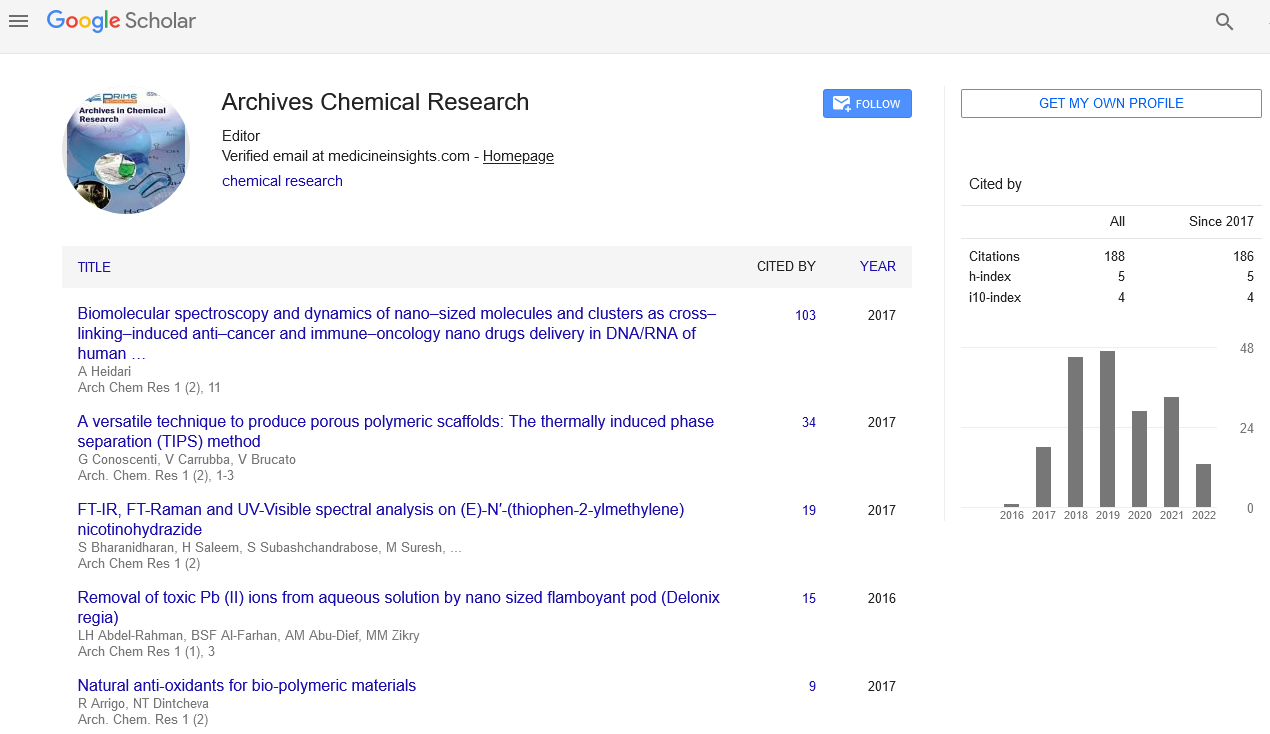Commentary - (2022) Volume 6, Issue 4
Chemical Exfoliation: The Process for the Removal of Dead Skin
Abdul Bin Adil*
Department of Chemistry, King Saud University, Saudi Arabia
*Correspondence:
Abdul Bin Adil,
Department of Chemistry, King Saud University,
Saudi Arabia,
Email:
Received: 01-Aug-2022, Manuscript No. IPACRH-22-14533;
Editor assigned: 03-Aug-2022, Pre QC No. IPACRH-22-14533 (PQ);
Reviewed: 17-Aug-2022, QC No. IPACRH-22-14533;
Revised: 22-Aug-2022, Manuscript No. IPACRH-22-14533 (R);
Published:
29-Aug-2022, DOI: 10.21767/2572-4657.22.6.15
Description
In essence, chemical exfoliation is a means to hasten the removal of dead skin cells from the skin’s surface. Numerous ways may this type of exfoliation help to improve skin health. By understanding the various ways that chemical exfoliation functions, you can maintain the clarity and health of your skin. As well as defending the skin from free radical damage, it helps heal acne scars, dull skin, dark spots, and pigmentation. Chemical exfoliation removes the top layer of skin to reveal younger looking skin beneath. Chemical exfoliation is gentler than manual exfoliation.
Similar to chemical peels, chemical exfoliation removes skin cells. But it’s important to remember that unlike a chemical peel, this form of exfoliation commonly happens unattended, so it doesn’t require nearly as many strong chemicals. This typically implies that the outcomes won’t be as substantial. On the other hand, chemical exfoliation can still be a fantastic technique to maintain healthy skin. Your skin’s cells renew themselves each month. As a result, it is highly likely that the fresh, healthy skin cells may accumulate dead skin cells on them. Pores getting clogged as a result can lead to acne or a number of other issues. Dead skin cells naturally shed on a regular basis, although they might not shed as quickly as you’d want. By employing chemical exfoliation, which can hasten the process, you can help dissolve these dead skin cells. Due to its capacity to reach deeper layers of the skin, chemical exfoliation is ultimately favored by many people over physical exfoliation. This might produce greater results than physical exfoliation, although not being as effective as a chemical peel.
Two basic types of exfoliation exist for removing dead skin cells. Exfoliation, both chemical and physical, is a frequent technique for enhancing skin health. The procedure of manually removing dead skin cells with a tool or other equipment is referred to as “physical exfoliation.” In contrast, chemical exfoliation uses chemicals to exfoliate dead skin cells from the skin’s surface. Chemical exfoliation uses a wide range of chemical substances. Understanding the variations is crucial since they will lead to various outcomes. The three primary categories are PHAs, BHAs, and AHAs.
PHAs, sometimes referred to as poly-hydroxy acids, are a form of chemical exfoliant that are frequently used by people with sensitive skin. These substances’ capacity to permeate the skin is constrained by the bigger molecules of these substances, which are mostly lactobionic acids and gluconolactone. This is generally the reason it’s wonderful for those with sensitive skin. BHAs, or beta hydroxy acids, often contain tropical and salicylic acids. By clearing the pores using this form of exfoliant, serious problems with the skin’s appearance and health can be avoided. These acids are commonly used by those with oily or acne-prone skin. Alpha hydroxy acids, or AHAs, often include a number of acids that are found in nature. These include acids like citric, malic, lactic, and glycolic. When you utilise AHAs, you’ll probably see a noticeable improvement in the tone of your skin and a minor decrease in skin discolouration.
Acknowledgement
None.
Conflict of Interest
Authors declare no conflict of interest.
Citation: Adil AB (2022) Chemical Exfoliation: The Process for the Removal of Dead Skin. Arch Chem Res. 6:15.
Copyright: © 2022 Adil AB. This is an open-access article distributed under the terms of the Creative Commons Attribution License, which permits unrestricted use, distribution, and reproduction in any medium, provided the original author and source are credited.

